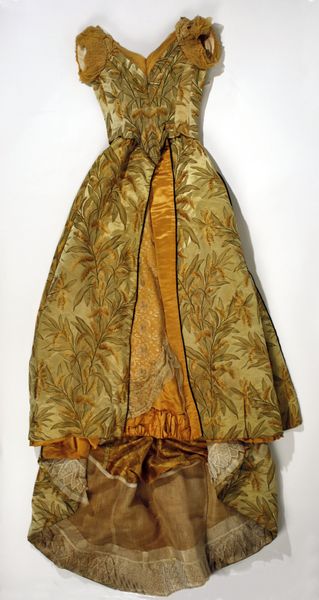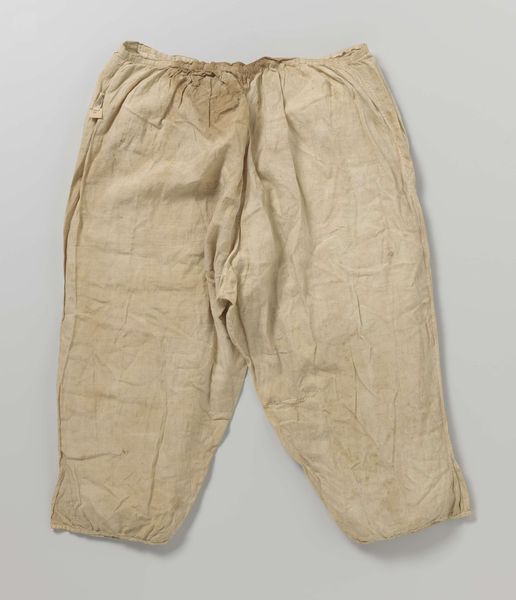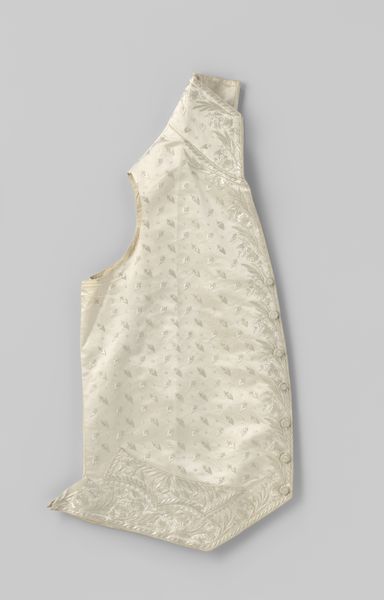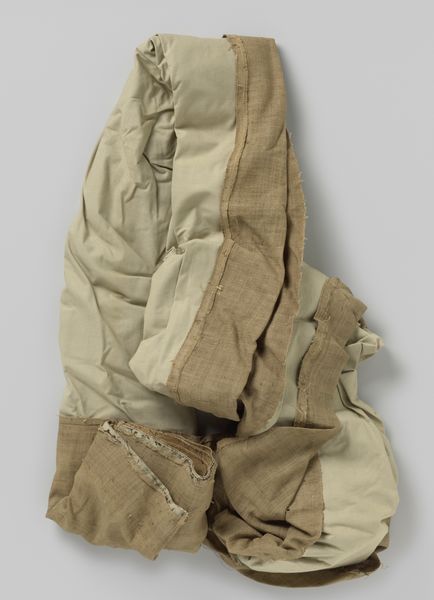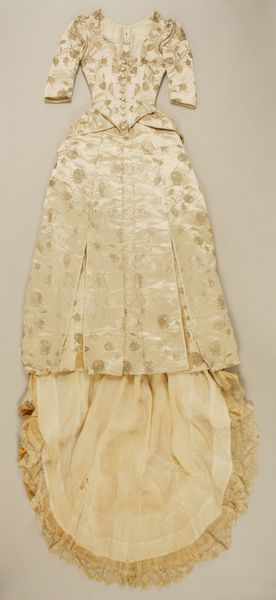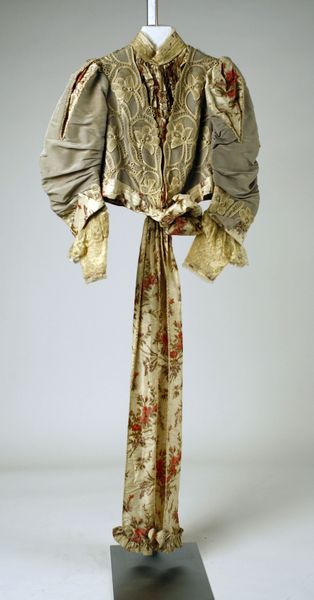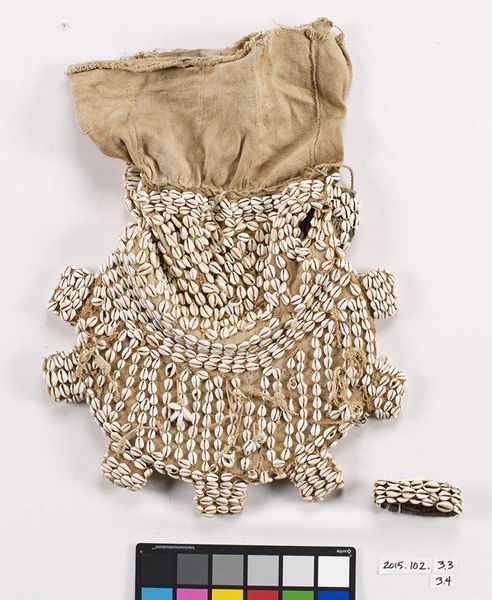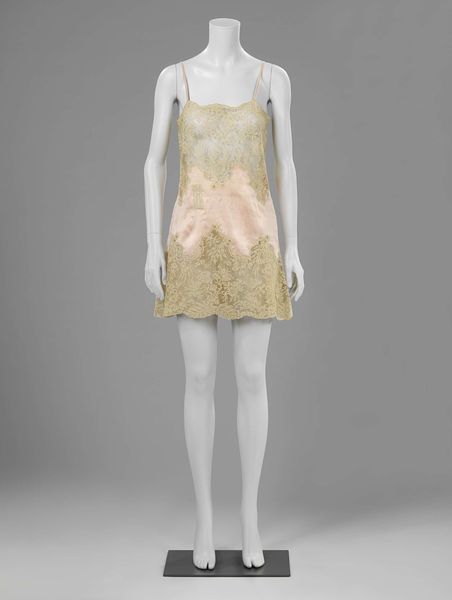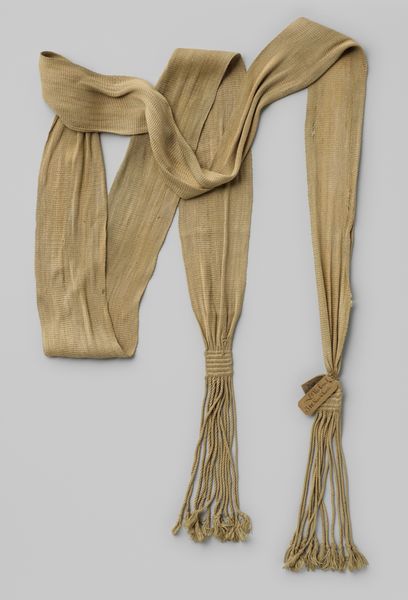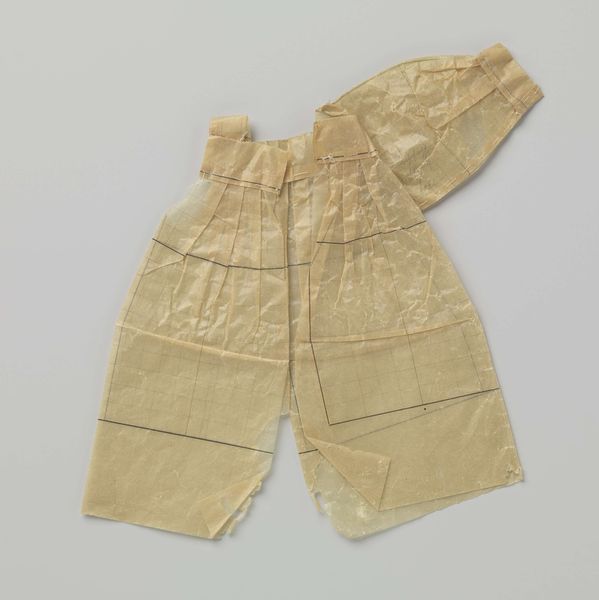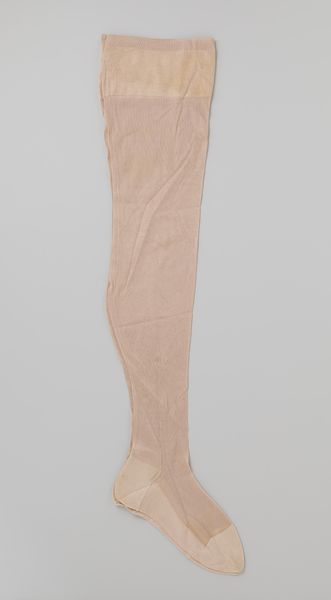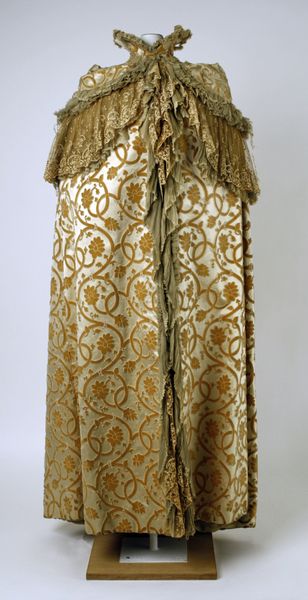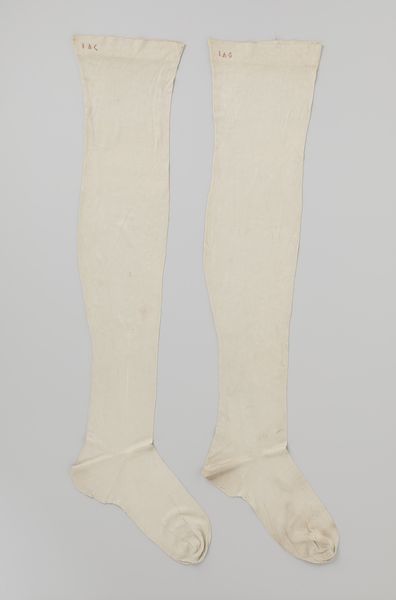
Rok met sleep van zalmkleurige satijn, versierd met een rank- en kandelaberornament van zilverdraad en met medaillons met in grisaille geschilderde landschappen en boeketten before 1912
0:00
0:00
textile
#
art-nouveau
#
textile
#
fashion and textile design
#
historical fashion
#
wearable design
#
fabric design
#
decorative-art
#
clothing design
Dimensions: length 11.0 cm, width 540.0 cm
Copyright: Rijks Museum: Open Domain
Curator: What a sumptuous piece of wearable art. This is a skirt with a train of salmon-colored satin, embellished with delicate silver thread work and medallions that have miniature landscapes and floral arrangements painted in grisaille. It was created before 1912 by the Maison Jeanne Paquin and is currently held in the Rijksmuseum collection. Editor: It’s absolutely stunning, almost ghostly. The pale satin, combined with the intricate, silvery details, gives it an ethereal quality. I can only imagine how this shimmered under candlelight. Curator: Indeed. Paquin was an innovative designer, and this skirt exemplifies the Art Nouveau style, a reaction to industrialization celebrating craftsmanship. Consider the level of detail here – the hand-painted medallions set against the shimmering satin ground. Editor: You’re right, and look at the materiality! The juxtaposition of the luxurious satin, an inherently soft and flowing textile, with the rigid, geometric structure of the embroidery. The skirt embodies both opulence and constraints through materials and form. The craftsmanship seems immense! I’m very interested in the hands involved and the economic circumstances required to produce this level of detail. Curator: That’s a wonderful point. Pieces like this reveal the complex power structures within the fashion industry. Elite fashion houses depended on countless skilled artisans. The creation of these garments supported these trades but was also limited to the wealthy. Editor: Precisely. Think about the silkworms, the dyers, the embroiderers – the sheer number of laborers involved in its creation. Also, I wonder how heavy it is, to be honest. Satin can be deceiving, and with that train, its wearer’s movement must have been deliberately slowed, her presence amplified by the sounds of rustling fabric, reinforcing social status. Curator: Absolutely. It's a reminder that fashion wasn’t merely about aesthetics, but a visual signifier of societal status and political affiliations, made real by design houses like Maison Paquin. Editor: So, while its beauty might first strike the viewer, its true depth lies in understanding its complex material creation. I won’t look at high fashion the same. Curator: And I’m taking away fresh appreciation for the cultural significance of historical couture.
Comments
No comments
Be the first to comment and join the conversation on the ultimate creative platform.
